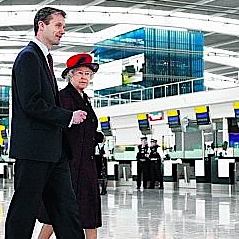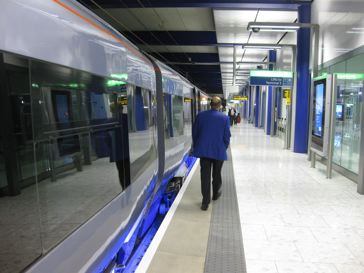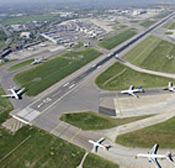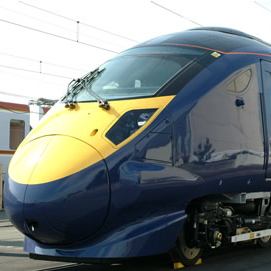 Lately in air travel, the news has been about domestic airlines cutting back and airports seeing services reduced.
Lately in air travel, the news has been about domestic airlines cutting back and airports seeing services reduced.
In London, that’s not quite the case.
London’s chief international airport, Heathrow, has long been overburdened, dogged by delays, and generally presented fliers with a substandard experience.
And while the London area has a whopping five airports (Heathrow, Gatwick, Stansted, Luton, and the small London City Airport), the capacity on its runways has nearly been reached, or, in Heathrow’s case, nearly exceeded.
THE PLANS
The Labour government currently in power insists that the third runway at Heathrow (as well as a second runway at Stansted) is a “done deal” and intend to approve the expansion before Christmas.
However, in a move that surprised many, Britain’s Conservative party (aka the Tories) announced its opposition to adding a third runway at Heathrow, declaring it supported instead a high-speed rail line down Britain’s spine to relieve the transit pressure.
The Conservatives don’t have the required number of seats in Parliament to block Labour’s transportation plans, and with the next election not due until 2010, there’s more than enough time for Labour to push through their transit plans. But, the Heathrow expansion is hardly a done deal, and opposition is mounting.
 According to Conservative shadow transportation secretary (leaders of the political opposition make up the “shadow cabinet” in Britain, a sort of cabinet-in-waiting) Theresa Villiers, a high-speed rail could replace up to about 66,500 flights per year. This, she notes, “would free up almost one third of the capacity that would be provided if a third runway were built.”
According to Conservative shadow transportation secretary (leaders of the political opposition make up the “shadow cabinet” in Britain, a sort of cabinet-in-waiting) Theresa Villiers, a high-speed rail could replace up to about 66,500 flights per year. This, she notes, “would free up almost one third of the capacity that would be provided if a third runway were built.”
Villiers proposes using the cash that would be spent on a Heathrow expansion, along with some private funding, to build the rail line. The line is estimated to cost £20 billion (about $35 billion U.S.). It would travel from St. Pancras in London, via Birmingham and Manchester to Leeds in Northern England.
A recent Financial Times report claims that there’s more than enough room for a Heathrow expansion and a high-speed rail line:
“It was a ‘false choice’ to prioritise high-speed rail over a third runway and would put UK competitiveness at risk. Both were needed—the lack of airport capacity must be addressed.”
Meanwhile, London Mayor Boris Johnson (also a Conservative) is interested in a plan that would build an entirely new airport—in the estuary of the Thames River that flows through London.
THE PROBLEMS
Opposition to nearly all of the plans abounds.
Unsurprisingly, British Airways hates every idea except a third runway at Heathrow. Airline officials were aghast by the Conservative party’s announcement to support the high-speed rail. A recent statement in the Guardian read, “It is disappointing if the Conservatives are now saying they would turn their back on jobs and wealth creation, and put the UK’s air links in a straitjacket not imposed anywhere else in the world.”
 The real reason BA is so opposed to the rail suggestion? Its slots at Heathrow are one of its biggest assets. BA dominates Heathrow to about the same extent that Delta does Atlanta. So it’s reasonable that it would be upset at any plan that doesn’t affirm Heathrow as the be-all, end-all of British airports.
The real reason BA is so opposed to the rail suggestion? Its slots at Heathrow are one of its biggest assets. BA dominates Heathrow to about the same extent that Delta does Atlanta. So it’s reasonable that it would be upset at any plan that doesn’t affirm Heathrow as the be-all, end-all of British airports.
Other critics of the high-speed rail point out that it would lighten only about 3 percent of Heathrow’s capacity.
In addition, Scottish neighbors up north are peeved by the proposed end of the line: Leeds, England, as opposed to a termination point in Glasgow or Edinburgh.
Brian Donohoe, of the rival Labour party, was recently quoted in The Scotsman as saying,
“As many people flew between Scotland and London as Leeds and London, and there was sufficient justification to extend the line, which would be built between 2015 and 2027, north of the Border [between England and Scotland] … any right thinking person knows the main arteries of the country must incorporate Scotland.”
Meanwhile, airlines that resent British Airways’ dominance are opposed to the Heathrow expansion, as are locals residents concerned about increased noise and air pollution.
Environmentalists poo-poo Mayor Johnson’s new airport idea, noting the obvious environmental drawbacks of dumping landfill on top of an estuary.
THE SOLUTION … UNKNOWN
Expanding Heathrow would make British Airways happy and could help alleviate the airport’s woeful on-time record. But it would also increase pollution and congestion in an already congested and polluted part of London. It is also the most expensive of all London airports to expand, since the local area is fully developed and fairly densely populated. Plus, even optimists figure that it would be at least 2015, if not 2020 before a Heathrow expansion could be completed.
 The high-speed rail line proposed by the Conservatives is a refreshingly green idea, but would not be enough to significantly reduce congestion at Heathrow, even if the Scots get it to extend farther north.
The high-speed rail line proposed by the Conservatives is a refreshingly green idea, but would not be enough to significantly reduce congestion at Heathrow, even if the Scots get it to extend farther north.
Ultimately, air capacity in London must be expanded somehow. But with five airports, Heathrow may turn out to be the worst one to choose for an expansion.
Building a new airport, as suggested by Mayor Johnson, has a few advantages—while flights coming in and out of Heathrow fly directly over the city, the new airport would be far less disturbing to Londoners as flights approached from over the North Sea. The drawbacks? It would take a long time to build, is hardly eco-friendly, and it would likely be the most expensive option of all.
What about the other airports?
London’s City Airport has a great location in the center of the city, but it’s hemmed in on all sides and no one is seriously considering an expansion. Luton is a bit far-flung and has relatively weak transportation links with central London, but has been growing fast, carrying almost 10 million passengers in 2007, up from just 3.2 million a decade earlier. Locals have quashed expansion plans for now, but as the debate rages over the future of London’s airspace, Luton may be pulled back in.
Meanwhile, Sir Richard Branson has parachuted onto the scene with his plan to buy Gatwick, which the British Airport Authority (BAA) must sell, presumably to turn it into a competitor to Heathrow. (Gatwick currently handles about 34 million passengers per year, compared to 68 million at Heathrow and 24 million at Stansted.)
In any case, Gatwick can’t be expanded until 2019 thanks to local planning agreements, but it would be much easier (and cheaper) to boost capacity there than at Heathrow. It’s also relatively close to central London and has decent transit links already.
Stansted, on the other hand, would be even easier and cheaper to expand, though it’s one of London’s further-flung airports and has negligible transit links with central London. Still, it may be London’s best bet for staving off massive air traffic congestion over the long term, especially if paired with public transportation improvement.
London’s air travel system is need of a dramatic upgrade, but where and how to expand is still very much up in the air.
By New Media Manager Matthew Calcara for PeterGreenberg.com.
Related links:
Financial Times, Guardian, The Scotsman, Associated Press, The Times (of London)
Check out our previous Heathrow coverage:












